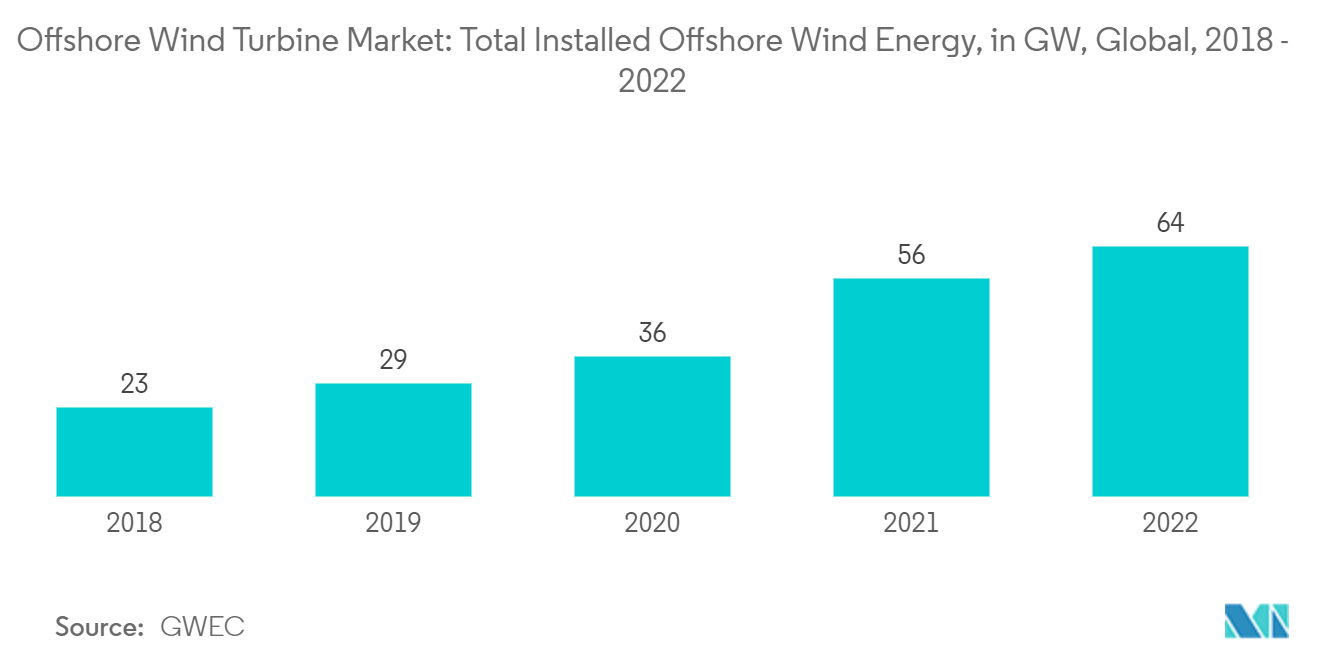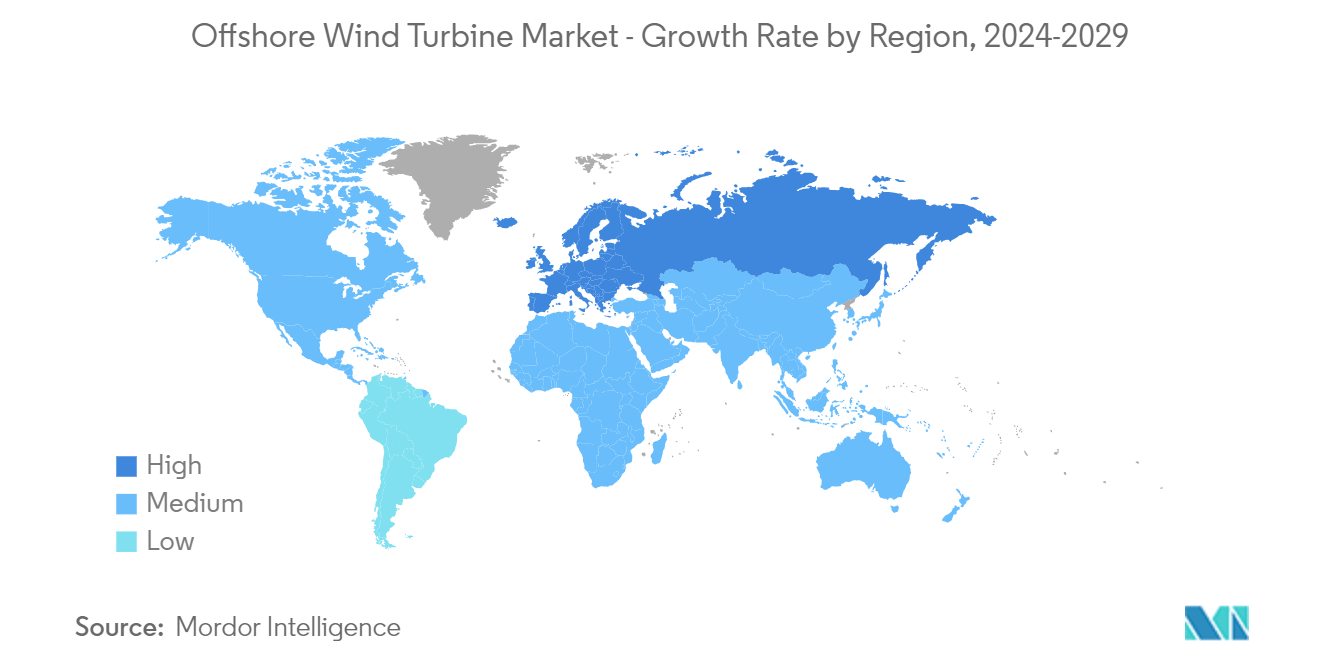Market Trends of Offshore Wind Turbine Industry
Deepwater Segment to Witness Significant Growth
- As energy demand rises globally, major countries and companies are adopting reliable renewable energy to provide clean energy. Adopting offshore wind energy with advanced technology attracted governments and companies to invest in the sector.
- Global Wind Report 2023 showed that the total global offshore wind energy installed capacity accounted for 64 GW in 2022. With an annual growth rate of 14.3% and technological developments to overcome the installation problems in deepwater zones, the offshore wind capacity is expected to increase, which, in turn, will drive the offshore wind turbine market.
- Technological improvements, such as the increased capacity of wind turbines, floating wind turbines, and 3D printing, brought the overall cost of offshore wind power to the lowest level and opened up new offshore locations, such as deepwater, that were previously inaccessible due to lack of investment and technology. These developments are expected to augment the adoption of deepwater wind power worldwide.
- For instance, in March 2022, TotalEnergies joined Trident Winds Inc. in the Castle Wind LLC joint venture (JV) to develop a 1 GW offshore wind project off the coast of Morro Bay. The project is expected to be a deepwater project. TotalEnergies entered the joint venture, which EnBW North America previously held.
- Apart from this, the companies have recently been able to install taller wind turbines due to improvements in the wind turbine materials used, allowing the turbines to exploit higher altitude winds. Also, these new turbines have much more prominent blades and can sweep more area than smaller turbines. The growing size of wind turbines helped lower the cost of wind energy due to the economy of scale, indicating that it is economically competitive with fossil fuel alternatives in many countries, such as the United States, Germany, and France. This recent trend is expected to drive the offshore wind turbine market during the forecast period.
- By location of deployment, the deepwater offshore industry is expected to remain the driver of the wind turbine industry during the forecast period, owing to declining costs and improved technology.

Europe is Expected to Hold the Significant Share in the Market
- Europe accounted for the second-largest share of the offshore wind power installed capacity in 2022. According to the European Union, Europe represents around a quarter of the global installations of the total wind market.
- Europe will likely be at the helm of the offshore wind market worldwide. Europe added around 2,460 MW of offshore capacity in 2022. In 2022, the region had an installed offshore wind capacity of approximately 30.27 GW, corresponding to an annual growth rate of 16% compared to the previous year.
- Even though a large percentage of the total offshore wind installations is in European waters, the governments in the North Sea region set a target for installing wind farms in their territorial waters. Nine European countries have committed to multiplying the capacity of offshore wind farms in the North Sea by eight times the current levels before 2050.
- As of 2022, Britain has 45 offshore wind farms producing 14GW, with plans to expand capacity to 50GW by 2030. Additionally, France aims to develop massively to 40GW in 2050 in renewable energy, with offshore wind energy being the primary production source between 2030 and 2050.
- Moreover, according to the Minister of Infrastructure and Energy, in March 2022, Albania was working on an offshore wind project in the Adriatic Sea supported by the European Bank for Reconstruction and Development (EBRD). The project is currently in the study phase.
- Such factors will likely bring opportunities for the players involved in the offshore wind farm business to expand in the European market during the forecast period.


